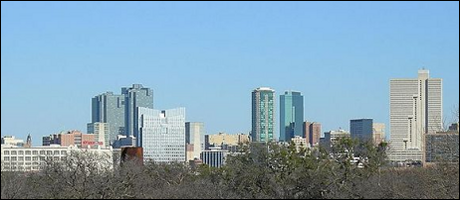
Moving to Fort Worth, Texas: A Comprehensive Relocation Guide
Considering moving to Fort Worth, Texas? This dynamic city of over one million residents blends Western heritage with modern growth, making it one of the fastest-growing major cities in America. Here’s your complete 2025 guide to relocating to Cowtown.
Demographic Profile to Consider If Moving to Fort Worth:
Fort Worth reached a historic milestone in 2024 by becoming one of just two U.S. cities to surpass one million residents that year, with a population of approximately 1,008,000 as of 2025. Located in Tarrant County in North Central Texas, the city is the 11th-largest in the nation and continues growing faster than any other major Texas city. The city’s diverse neighborhoods range from historic districts near downtown to modern master-planned communities in the northern suburbs. Fort Worth maintains its distinctive Western character while embracing urban sophistication, creating a unique blend that attracts families, young professionals, and retirees alike. Find trusted local services for moving, living, and working in Fort Worth.Fort Worth Relocation Directory
Cost of Living to Consider If Moving to Fort Worth:
Fort Worth offers relative affordability compared to many large U.S. cities, though costs have risen with recent growth. The median household income stands at approximately $76,600, while the median home value has increased but remains more accessible than in neighboring Austin or coastal cities. Housing costs are notably lower than in Dallas or Austin, making Fort Worth attractive to first-time homebuyers and those seeking value in the Dallas-Fort Worth metroplex. Property taxes, utilities, and everyday expenses align with Texas averages, and the absence of state income tax provides additional financial relief for residents.
Economy and Job Market:
Fort Worth’s economy thrives on aerospace and defense, healthcare, financial services, and logistics. Major employers include Lockheed Martin Aeronautics, which manufactures F-35 fighter jets; American Airlines, headquartered in Fort Worth; Bell Textron, a major helicopter manufacturer; and numerous Fortune 500 companies in the Alliance area. The Fort Worth-Arlington region added more than 95,000 jobs over the past three years, with particularly strong growth in advanced manufacturing, technology, and professional services. The city’s central location and robust infrastructure make it a logistics hub for distribution centers serving national markets.
Education:
Fort Worth Independent School District serves most of the city, offering traditional campuses alongside magnet schools and career academies. Several other districts, including Keller ISD and Carroll ISD, serve portions of Fort Worth and maintain strong academic reputations. Higher education options include Texas Christian University, a prestigious private institution; the University of North Texas Health Science Center; and Tarrant County College, which provides accessible community college programs. Texas Wesleyan University and several satellite campuses of major universities expand educational opportunities throughout the region.
Recreation and Lifestyle:
Fort Worth celebrates its cowboy heritage through the Fort Worth Stockyards National Historic District, where daily cattle drives and Western entertainment draw visitors from around the world. The city’s Cultural District features world-class museums, including the Kimbell Art Museum, Modern Art Museum of Fort Worth, and Amon Carter Museum of American Art. Trinity Park and the Fort Worth Botanic Garden provide green spaces for outdoor recreation, while the Trinity Trails system offers miles of scenic paths for walking, running, and cycling. Professional sports fans enjoy watching the Texas Rangers at Globe Life Field in nearby Arlington and can access Cowboys and Mavericks games within the metroplex.
Healthcare and Services:
Fort Worth’s medical infrastructure includes several major hospital systems providing comprehensive care. Baylor Scott & White All Saints Medical Center, Cook Children’s Medical Center, John Peter Smith Hospital, Texas Health Harris Methodist Hospital Fort Worth, and Medical City Fort Worth deliver emergency services, specialized treatment, and routine care. The Near Southside medical district concentrates healthcare facilities, making access convenient for residents across the city. The presence of the UNT Health Science Center further strengthens medical education and research capabilities.
Transportation:
Trinity Metro operates Fort Worth’s public transportation network, including local buses, the TEXRail commuter rail line to Dallas Fort Worth International Airport, and the Trinity Railway Express connecting downtown Fort Worth to downtown Dallas. Interstate 35W runs north-south through the city, while Interstate 30 and Interstate 20 provide east-west connections. The city is served by two major airports: DFW International Airport and Dallas Love Field, both within reasonable driving distance. Trinity Metro continues expanding services, including on-demand ZIPZONE areas and enhanced regional connections.
Conclusion:
Moving to Fort Worth in 2025 means joining one of America’s most vibrant and fastest-growing cities. With its combination of Western heritage, cultural sophistication, strong job market, and relative affordability, Fort Worth offers an exceptional quality of life. The city’s continued growth brings new amenities and opportunities while maintaining the friendly, down-to-earth character that makes Cowtown special.

